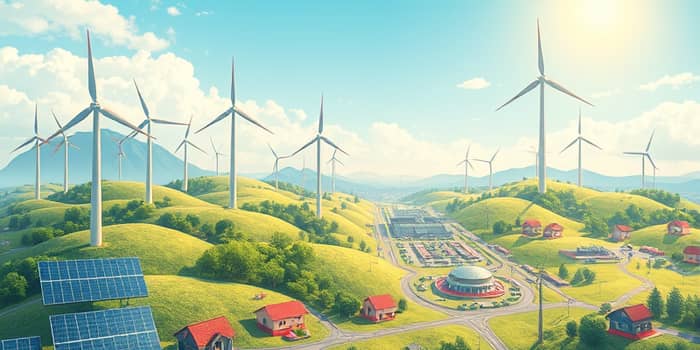
In an era defined by climate urgency, energy majors are reimagining their roles to become architects of a cleaner, more resilient future. From dramatic emissions cuts to bold investments in renewables and breakthrough technologies, they are carving out pathways for a low-carbon world.
Leading energy holdings are charting bold pathways toward a cleaner future by cutting emissions and reshaping portfolios to align with net-zero emissions by 2050.
TotalEnergies, bp, and other majors have defined methane emissions reduction goals as integral milestones. For example, TotalEnergies exceeded its 2025 target in 2024, slashing methane emissions by 55 percent relative to a 2020 baseline. It now aims for a 60 percent cut by the middle of this decade and 80 percent by 2030.
bp has rolled out advanced methane measurement and operational emissions software across upstream assets, managing flaring with precision and advocating for an industry-wide near-zero methane ambition. Similar efforts appear in automation retrofits, electrification of production sites, and investments in analytics that track carbon outputs in real time.
The global energyscape is witnessing an unprecedented inflow of capital into clean power. The renewables market swelled to over one trillion dollars in 2024 and is projected to surpass that in 2025, with trends ramping up toward a potential 2.3 trillion by 2033.
Wind energy dominates the pipeline at roughly forty percent, followed by solar and hydro projects each contributing around fifteen percent of total value. As projects come online, such as a two-hundred megawatt solar PV plant in Idaho and multiple battery storage installations across the United States, the capacity to integrate variable renewable output is strengthening.
Next generation technologies are taking shape as companies seek breakthrough solutions. Large carbon-capture and storage hubs in Northwest Europe are transitioning from concept into construction, capturing emissions at scale before they enter the atmosphere. These facilities represent a pivotal bridge technology for heavier industry sectors.
Green hydrogen is emerging as another vital pillar. Europe is on track to commission its first industrial-scale green hydrogen plants in 2025, fueled by renewable electricity and electrolyzers. In parallel, Indias National Green Hydrogen Mission stands as a policy model, linking industrial strategy to a zero carbon future.
Meanwhile, innovative carbon removal technologies are attracting venture capital, with prototypes moving from lab benches to pilot facilities. These approaches range from direct air capture units to enhanced mineralization processes, each promising new pathways to offset residual emissions.
Regulatory frameworks shape the pace of change. Countries such as Denmark, Germany, and Luxembourg are hailed as leaders in crafting policies that unlock financing for clean energy and ensure project stability. Their success stories highlight the importance of clear targets, streamlined permitting, and robust incentive structures.
Emerging economies like China and India have accelerated clean energy deployment, aligning national strategies with the UN Sustainable Development Goals. However, global regulatory momentum has decelerated since 2022, underscoring the need for renewed political resolve and pragmatic long term policies that reinforce investor confidence.
As the energy sector charts its course toward 2030 and beyond, several challenges loom large. Execution risk rises when regulation slows, and balancing short term energy needs with long term decarbonization goals remains a delicate act. Natural gas and LNG capacity will persist as transitional fuels, even as companies accelerate renewables deployment.
Yet the horizon is bright with opportunity. Expansion of battery storage and digital grid management can provide universal access to sustainable energy while enhancing system resilience. Financing innovation through mechanisms like tax equity and carbon credit transfers will keep capital flowing to promising projects.
Employee retraining is pivotal as workforces evolve. Investments in employee upskilling for the low-carbon economy and partnerships with small and medium enterprises ensure that the transition delivers positive social as well as environmental impacts. By 2030, global renewable electricity generation could exceed seventeen thousand terawatt hours, a testament to human ingenuity and collective ambition.
The journey toward a sustainable energy landscape is both complex and attainable. It demands unwavering commitment from corporations, governments, investors, and communities alike. As major energy holdings refine their strategies and scale innovative solutions, they carry the potential to usher in a new era of clean, reliable power for all.
References













